|
|
|
República de Venecia
De Wikipedia, la enciclopedia libre
La Serenísima República de Venecia nació como ciudad-estado en el norte de Italia, a orillas del mar Adriático, y luego reunió a todos los vénetos del Triveneto, Istria y Dalmacia. Existió como tal desde el siglo IX hasta 1797. También recibe el nombre de Serenissima Repubblica di San Marco, pues San Marcos es su santo patrono.
La Serenissima se constituyó progresivamente como Estado durante la Edad Media y se convirtió en una de las principales potencias económicas del mundo, ocupando un lugar preponderante en los intercambios comerciales entre el Mediterráneo occidental y oriental. Además, con sus instituciones oligárquicas notablemente estables durante casi un milenio, representó un papel político esencial.
A partir del siglo XVI experimentó una fase de declive político y territorial, eclipsado por un extraordinario desarrollo artístico, hasta que desapareció en 1797, vencida por Napoleón Bonaparte, pasando posteriormente a ser dominada por el Imperio austríaco y el Reino de Italia.
Se tiene como fecha de la fundación de Venecia el año 421, en el cual los habitantes de la región, ante la amenaza de las invasiones de longobardos y hunos que habían destruido la capital, Aquilea, se refugiaron en las marismas de la desembocadura del Po, en la laguna situada en el golfo, entre la península itálica y la balcánica, llamado más tarde precisamente golfo de Venecia. Las construcciones de esta época eran simples edificaciones lacustres, erigidas sobre palafitos. En razón de esta estratégica característica geográfica, Venecia tuvo desde entonces una gran independencia respecto a sus dominadores gracias a la barrera natural de la cadena de islas en una laguna profunda que impedía un ataque de caballería o infantería.
Dependencia del Imperio bizantino[editar]
Cuando el general Belisario conquistó para el Imperio bizantino gran parte de Italia en el siglo VI, Venecia pasó a formar parte del dominio de dicho imperio, dependiendo administrativamente de la ciudad de Rávena, sede del poder imperial en la península itálica, y estando gobernada por un oficial militar, el magister militum,[1] y subordinado a este, estaban los tribunos que ejercían la autoridad política en sus distritos.[2] La historia legendaria establece que para reemplazar a estos tribunos Paolo Lucio Anafesto fue elegido como el primer dux a finales del siglo VII. Sin embargo, el primer dux histórico surge de la revuelta en el exarcado de Rávena contra la iconoclasia del emperador, y contra el magister militum; es elegido el veneciano Orso Ipato como dux. Con la revuelta suprimida, el emperador reconoció al dux y le concedió el título de hypatos (cónsul). No obstante, Venecia siguió siendo una provincia del exarcado de Rávena, y se siguió nombrando al magister militum. No obstante, con la conquista lombarda del exarcado de Rávena, la provincia de Venecia permaneció en solitario bajo el gobierno del dux Orso Ipato, en calidad de gobernante autónomo manteniendo la fidelidad al imperio bizantino.[3]
Independencia y expansión[editar]

Máxima expansión de la República de Venecia; en rojo territorio veneciano (oscuro original, claro temporal)(en italiano).
La decadencia del poder imperial en el siglo IX fue aprovechada por Venecia para actuar de forma independiente con los francos y con los eslavos sin seguir los dictados del Imperio. Con la recuperación de la iniciativa bizantina en Italia en época de Basilio I, este concedió al dux veneciano el título de protospatharios, equiparándolo a la familia imperial.[4]
La ubicación de Venecia en en una laguna natural hacía arriesgado el intento de conquistarla, en tanto el arte naval europeo en la Baja Edad Media estaba muy poco desarrollado. Precisamente, fueron los marinos venecianos quienes colaboraron con el desarrollo de la construcción naval en Europa por razones primordiales de necesidad: Venecia poseía un territorio continental muy pequeño, por lo cual su fuente principal de subsistencia fue el comercio en el Adriático, y ante ello el estímulo a la navegación marítima se había transformado en una necesidad y, a la vez, en fuente de poder político y financiero.
En la Alta Edad Media, Venecia prosperó como nunca antes gracias al control del comercio con Oriente y a los beneficios que esto suponía, expandiéndose por el mar Adriático, aproximadamente desde 991 con el reinado del dux Piero II Orseolo, bajo cuyo régimen empezó la expansión veneciana por las costas de Dalmacia. El hecho que muy pocos estados de la época poseyeran los conocimientos navales de los venecianos favoreció a éstos en el desarrollo de una flota comercial y militar muy extensa para su época, que les sirvió para instalar puestos comerciales en cada rincón del Mediterráneo oriental.
En realidad, como la expansión político-militar del Imperio bizantino se concentraba en las rutas de tierra firme, la corte de Constantinopla dejaba fácilmente las islas mediterráneas a la ambición mercantil de los venecianos, que las aprovechaban como avanzadas comerciales hacia Asia Menor y el norte de África. La expansión territorial veneciana fue tan exitosa al punto que a mediados del siglo XI una bula papal reconoció la soberanía de Venecia sobre toda la costa oriental del Adriático.
La ubicación de Venecia en el medio del mar Mediterráneo le permitía un activo rol mercantil entre Bizancio y el resto de Europa, además su ubicación en el extremo norte del Adriático la defendía de ataques marítimos debido a su dominio militar sobre Dalmacia; tales circunstancias aumentaron el poderío veneciano en una época cuando las flotas comerciales en el Mediterráneo eran raras. No obstante, otras repúblicas marítimas de Italia empezaron a competir abiertamente con Venecia, como fue el caso de Pisa, Amalfi y Génova.
Los venecianos sostuvieron especialmente una fuerte rivalidad comercial y militar con la República de Génova, situada en el extremo noroeste de Italia, y que paulatinamente aumentó su influencia comercial en el Mediterráneo Oriental y en el mar Negro. Pese al aumento del poderío genovés entre los siglos XIV y XV, Venecia pudo mantener su hegemonía comercial sobre Génova a largo plazo.
Otro factor clave del éxtio veneciano fue la tolerancia religiosa y social de la República Veneciana hacia los judíos y musulmanes, de hecho esta tolerancia de los venecianos en materia religiosa les permitió comerciar libremente con los estados islámicos del Norte de África, sirviendo de valiosos intermediarios entre éstos y Europa, sin que las diferencias religiosas fueran obstáculo alguno para las relaciones comerciales.
Paralelamente, una política similar era seguida hacia el judaísmo pues se permitía libremente el asentamiento de comerciantes judíos en territorio veneciano, permitiendo a éstos ejercer el comercio e industria libremente, además de beneficiar a Venecia por darle acceso a las redes de contactos financieros que las comunidades judías de toda Europa habían conseguido preservar.
Del mismo modo, la Reforma Protestante de inicios del siglo XVI no tuvo mayor acogida en Venecia pero ello no impidió que los venecianos mantuvieran excelentes relaciones comerciales con países del Norte de Europa que habían abrazado el protestantismo, pese a las presiones de los Estados Pontificios y de España durante la Contrarreforma. A pesar que desde inicios del siglo XVI el Vaticano había intentado que Venecia implantase en sus dominios el Tribunal de la Inquisición, los gobernantes venecianos rechazaron aplicar en la práctica toda medida que les privase de sus relaciones comerciales con los no católicos.
Apogeo de la República[editar]
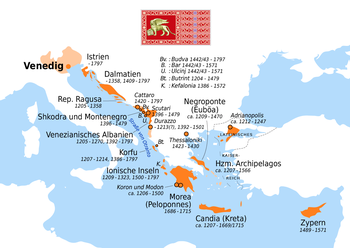
República de Venecia (naranja) y sus territorios en los siglos XV y XVI.

Gentile Bellini: Procesión en la PLaza de San Marcos (1496), 367x745 cm, Galleria dell'Accademia, Venecia.
Después del año 1100, Venecia era ya una gran potencia mediterránea en los planos económico, político y militar, al punto que podía ofrecer sus servicios como flota naval al propio Imperio bizantino y ganar gracias a ello privilegios comerciales excepcionales en Constantinopla, el mayor centro comercial de Europa en esos años, empleando para este fin una combinación de diplomacia y poderío mercantil.
El rol intermediario de los venecianos les permitió ejercer un control casi completo sobre los intercambios comerciales europeos con el Oriente Medio, mientras que los reinos musulmanes del Mediterráneo recurrían también a Venecia como intercesor comercial con el resto de Europa. La República Veneciana, más interesada en la preservación del comercio internacional que en la expansión religiosa o militar, aparecía como el intermediario mercantil ideal para los reinos mediterráneos de cualquier religión a partir del siglo XII, lo cual le permitió a Venecia acumular grandes riquezas y ganar ventajas comerciales.
La flota veneciana, por su poderío y gran tamaño, fue determinante para realizar el saqueo de Constantinopla en la Cuarta Cruzada en 1204, acelerando con este hecho la decadencia del Imperio bizantino. Como consecuencia de la severa debilidad bizantina, Venecia logró anexionarse Creta y Eubea a inicios del siglo XIII, expandiendo aún más su poder y riqueza, llegando las flotas comerciales venecianas a instalar bases comerciales inclusive en las orillas del mar Negro, específicamente en la actual costa de Crimea. Esta expansión hacia territorios de la Rus de Kiev le permitió a los comerciantes venecianos instalarse en los puntos más occidentales del comercio asiático, ganando con ello un privilegiado acceso a los valiosos productos traficados por la Ruta de la Seda desde China. Esta importantísima ventaja comercial, inexistente para otros estados europeos de la época, fue explotada excelentemente por los venecianos.
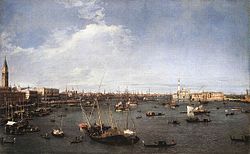
Venecia por Canaletto, 1738-40.
http://es.wikipedia.org/wiki/Rep%C3%BAblica_de_Venecia
|
|
|
|
|
|
Trip to Italy and France
My wife, son, and I recently returned from a 3 week trip to Italy and France and we are continuing to digest the experience. International travel can shift one’s perspective and I no longer see myself or the familiar surroundings of home quite the same. It is much harder to articulate exactly what this shift consists of.
In Italy we first visited Venice and Bologna, then rented a car and explored the Umbrian towns of Perugia, Spello, Assisi, and Bevagna.
In Venice there must have been 20,000 people in St. Mark’s square on a rainy day! We were there right before Pascua and that is probably why there were so many Italian tourists in Venice. Here is a detail from Venice’s Church of the Maddalena (Magdaline).

The most notable feature is the portal, with masonic symbols over the door (probably connected to the Balbo’s membership in the Knights Templar). The interior has hexagonal plan with four side chapels and a presbytery. Source
Sapientia Aedificavit Sibi Domum is Latin for “Wisdom Has Built Her House.” So much praise for Mary Magdalene. This inscription suggests to me that she was the mother of the bloodline of Jesus rather than the prostitute the church fathers have traditionally made her out to be.
I analyzed the symbols over the door in AutoCAD and amazingly, the area of the triangle precisely equals the area of the circle. So instead of squaring the circle here we see an example of triangulating the circle.
Here is a astronomical clock in Piazza San Marco. There is another 24 hour clock on the other side of the Rialto bridge. See my Volume 2 film for deep connections to the 24 hour day. The Venetians must have understood that the position of the Sun signals more than the time of day. The Earth rotates through the changing influences of the zodiac and don’t forget the Moon’s position in the cycle is noted in the center. Interesting also that the singular massive billboard at the other end of the piazza is for a IWC Schaffhausen watch with a perpetual calendar that also tracks the lunar cycle.

Saturn is the god of time and the masks of Venice’s Saturnalia are world famous. Here I am trying on a Plague Doctor’s mask.

After spending a few days in the lovely medieval village of Bevagna, we drove through the countryside exploring Umbria and spent the night in Orvieto. Here is Orvieto’s most impressive Facade of God.

Northern Italy was to me surprisingly lush and densely populated. Italy has about twice as many people as live in all of the vastness of Canada!
I was amazed to see immense fields of solar panels along the highway. We saw this again in France along with large wind turbines.
We dropped off the car in Orvietto and took the high speed train to Rome. Traveling by train is fantastic, especially since so many high speed rail lines have gone in. Trains are much easier than flying and way more convenient. The train drops you off in the city center so you can sometimes walk to your destination whereas the airport must be placed a great distance away, usually necessitating a long taxi or bus ride. There is no security at train stations so the hassle factor is greatly reduced.
Rome was very crowded but I’m told it had nothing like the number of people present a few weeks earlier when the new Pope was selected. Here I am in front of St. Peter’s, standing on the Western wind rose marker. Papa Francesco didn’t come out to meet me.

In the porch of the Pantheon I saw this interesting symbol suggesting masonry or sacred geometry.

We flew from Rome to Marseilles, leaving behind the land of delicious pasta and pizza. In France we explored many medieval villages including Lourmarin, Bonnieux, Lacoste, Roussilon, Saignon, Apt, Rustrel, Goult, Menerbes, Senanque, Isle sur la Sorgue, Viens, Buoux, Simiane la Rotonde, and many other villages I forget the name of in the quiet and sparsely populated Luberon. We then drove west and stayed in the more populated Saint Remy de Provence, and explored Eygalieres, Uzes, the Pont du Gard, and Avignon. We took the TGV from Avignon to Paris and stayed in the City of Light for 5 days before returning to quiet Cortes Island, British Columbia, Canada where I live.
After reviewing the close to 3000 pictures we took on our trusty Canon point-and-shoot, I feel that digital photos don’t express emotional content very well. I have pioneered a technique that I discussed in one of my Photoshop User magazine articles (Sept 2012 issue) for turning photos into vibrant paintings. These digital “paintings” seem to me to be more emotive and alive as compared to photos.

The above image is of Glanum, the ruins of a Roman village near Saint Remy de Provence. The central part of the Roman town wasn’t discovered when Van Gogh painted these olive trees on site in 1889. The field where the olive trees were was excavated in 1921 and a forgotten town from 2000 years ago was rediscovered.

Olive Trees with the Alpilles in the Background by Van Gogh
Roman ruins are impressive. Stone is so permanent. Even today, most everything in Italy and France is made of stone or brick. I can’t emphasize enough how significant this is.

Gordes in the Vaucluse
Stone buildings with slate or tiled roofs last for hundreds if not thousands of years. Consequently the impression I get is that almost all of the housing is already existing. Therefore most of the construction effort in the built environment lays in restoration and renovation. Interiors can be redone and one can have a sleek modern interior inside a medieval stone shell. So people are largely freed up from having to each build their own house every generation like we seem to do in North America. Europeans seem to stay put also and live in the same place most of their lives, or at least that’s my impression. I have lived in almost 2 dozen houses in my life so far.
In Italy and France I had a palpable sense of permanence, continuity with the past, and how everything is already worked out by one’s forebears. This is a beautiful thing.
It was hard to find anything but Italian food in Italy and French food in France outside larger cities. I love both of these cuisines but after a while I was craving Indian, Thai, Japanese, Mexican, Vegan-Raw-Organic, just to name a few. Then it dawned on me that North America is a mashup, a hodgepodge, a mixed bag of many influences. Nothing is very permanent in the US and Canada. We seemingly have many more options but freedom can also be paralyzing. Without a traditional culture’s wisdom to follow, many are lost. But in that chaos there is also opportunity.
We had one of our most memorable dinners in Bonnieux, a village in the Luberon which was once a Templar stronghold. The L’Arome restaurant building dates from the 13th century, around the time the Templars discovered the Americas.

Adjacent to the restaurant is a bar with an highly interesting name. Google tells me le Terrail is the name of the marquisate that Bonnieux probably belonged to long ago.

The fact that the bar’s name is “33” is something that I took as a confirmation that I was recognizing another secret in plain sight. Why 33? It is a harmonic of the universe. Do the bar owners know this? Are the owners part of some kind of vast conspiracy going back at least to the Templars? 
It wasn’t open and I don’t speak French well enough to ask for anything more than a pain au chocolat anyway. And even then people don’t understand me. I have found the words “chocolate croissant” work much more effectively in France as you have to hit the French accent perfectly in order to be understood at all. My wife lived in France for a year and became fluent but still gets this treatment occasionally.
Incidentally Bonnieux’s neighboring village of Lacoste was the domain of the Marquis de Sade, and his chateau has fallen into as much ruin as his “sadistic” reputation. Lacoste is now primarily owned by French fashion designer Pierre Cardin, no connection to the fashion label Lacoste which was named after a French tennis player who invented the tennis or “polo” shirt. Here is the memorial to the Marquis de Sade next to his dungeons in Lacoste.

We went to the Abbaye Notre-Dame de Sénanque, a 12th century Cistercian monastery. On the tour of the abbey I was impressed by how beautiful the simple stonework is and how monks have lived in silence there for 850 years and amazingly a few still do.

We attended Vespers and were delighted to hear the monks sing gregorian chant, one of the only exceptions allowed in their vows of silence. Chanting really sacralizes the space and makes you feel the architecture and devotion to God like nothing else.
On a guided tour of monastery I came across this measuring instrument that reveals the units the Cistercians were using before the metric system. It says Coudée 52.36, Pied 32.36, Empan 20?, ?lme 12.56 [a 3 is written over the 5 as a correction so maybe this is supposed to be 12.36], and Paume 7.64. Is this the key to medieval measure? This will require further analysis.

To North American eyes, the cars in Europe are beyond tiny. In Bologna where we were staying with friends we crammed 5 people into a 1980’s Fiat 127, no problem other than the loading and unloading process which is similar to how it was in my well loved 1967 VW Beetle. Their Fiat has a 900cc engine, smaller than most larger motorcycle engines. But that’s nothing…they have 50cc cars in Italy! Yes you read that right, cars with tiny motorscooter engines are popular because they are exempt from requiring a license to drive (apparently this is a controversial law in Italy). Here is a 50cc car.

In France I saw Smart cars parked 90 degrees to how cars parallel park along the road; they just back into the curb and you 2 smart cars can fit in 1 normal parking space. Three wheeled motorscooters were popular in Paris having 2 front wheels in some kind of complicated steering linkage such that the scooter consequently doesn’t need a kickstand and presumably has better traction.
Everything in Europe is compact and efficient. For example, the roads in the Luberon are very narrow. What I would clearly call one single lane hosts 2-way traffic which can be nerve wracking.

The Luberon has 2nd gear and sometimes 3rd gear roads meaning they twist and they turn all the time. Everyone there seems to be part-time Formula 1 drivers and they push their cars to the limit. On Sundays dozens of motorcyclists show up racing their bikes for the pleasure of it.
The roads form a sort of neural network between villages so that every village is connected to all those villages surrounding them without having arterials nor freeways.
I really enjoyed feeling the connection with history and those who have come before. This is something that we have very little of in North America. It gives one perspective to consider the past.
|
|
|
|
|
|
Rockefeller Center: La Atlántida Global y sus símbolos

 El Rockefeller Center es uno de los lugares simbólicos más densos del planeta, aunque muy pocos entre sus millones de visitantes se paren a reflexionar sobre lo que significan estas imágenes. Se trata de una simbología relacionada con la historia reciente del capitalismo global, cuyas consecuencias estamos ahora sufriendo. El mito de la Atlántida, resurgida del océano para volver a desafiar a los dioses mediante la ilusión del conocimiento humano sin límites, el poder de la técnica y el dinero, y el individualismo como motor del mundo. El Rockefeller Center es uno de los lugares simbólicos más densos del planeta, aunque muy pocos entre sus millones de visitantes se paren a reflexionar sobre lo que significan estas imágenes. Se trata de una simbología relacionada con la historia reciente del capitalismo global, cuyas consecuencias estamos ahora sufriendo. El mito de la Atlántida, resurgida del océano para volver a desafiar a los dioses mediante la ilusión del conocimiento humano sin límites, el poder de la técnica y el dinero, y el individualismo como motor del mundo.

Es una simbología relacionada en parte con España. Según la mitología griega, Hércules en su viaje a la Península Ibérica se atrevió a robar la fruta sagrada que cuidaban las Hespérides, hijas de Atlas, fundador de la Atlántida, cumpliendo así la profecía sobre el fin de ese reino de titanes, como estaba anunciado. Este relieve del Museo de Olimpia muestra maravillosamente este episodio. Hércules sujeta el cosmos ayudado por la diosa Atenea, que le pone un almohadón en la espalda, mientras el mismo Átlas le trae las frutas de las Hespérides. Es una versión muy peculiar del mito, pues Átlas coopera en su propia destrucción, y sitúa en España, Hesperia, ese jardín prohibido.
Durante cincuenta años de su vida, el profesor Schulten efectuó investigaciones históricas y arqueológicas en la Península Ibérica en búsqueda de la Atlántida, y los últimos hallazgos parecen apoyar su hipótesis de que el reino andaluz de Tartessos, desaparecido en el siglo VI antes de Cristo, coincidía con la descripción que nos dejó Platón en el Timeo:
“(…) Sabios reyes habían formado en esta Atlántida una vasta y maravillosa potencia que dominaba toda aquella tierra además de otras muchas islas, y algunas comarcas del continente, apoderándose de todas, desde Libia al Egipto, y de Europa hasta Tirrenia (…) Empero sobrevinieron diluvios y terremotos, y en un solo día y en una sola noche fatal, todos aquellos guerreros fueron tragados por la tierra abierta. Desapareció la Atlántida y he aquí por qué aun hoy no se puede recorrer y explorar aquel mar, encontrando la navegación un escollo en el fangoso lodo que dejó la tierra al abismarse”.

El nombre del océano Atlántico viene de este supuesto reino hundido, que los cartógrafos del Renacimiento situaban entre América y Europa. Jacint Verdaguer en su famoso poemario La Atlántida, defiende que la búsqueda de ese mítico continente originó la aventura de Colón hacia el Atlántico e, indirectamente, el descubrimiento del Nuevo Mundo. Desde entonces, la Atlántida se asocia con América, y así lo describe el catalán José María Sert en los frescos de Titanes que pintó para decorar el vestíbulo principal del Rockefeller Center de Nueva York. Este mismo artista fue encargado por Manuel de Falla, para pintar los decorados de la cantata escenificada Atlántida, que aunque nunca llegó a estrenarse por culpa de la Guerra Civil, es la gran ópera española, escrita sobre todo en catalán, pues está inspirada en los poemas épicos de Verdaguer.

La Atlántida narra la lucha entre los dioses y los titanes hijos de Atlas, una lucha que recuerda bastante a la narración de la lucha entre los ángeles y los demonios, que fueron finalmente vencidos y arrojados al infierno. También la Atlántida fue destruida y hundida en el océano según los viejos mitos griegos. Por eso, el relato de la Atlántida, como el del Génesis sobre el Árbol del Conocimiento del Bien y del Mal en el Paraíso terrenal, simboliza la ambición sin límites del ser humano, y también del origen mismo de la civilización tal como hoy la conocemos, basada en el saber por experiencia, en la ciencia.

Todos los símbolos del Rockefeller Center siguen una estética griega que ha quedado un tanto adulterada para adaptarse al gusto popular del momento: El Art Decó, símbolo por excelencia del capitalismo americano. De hecho, este complejo de rascacielos y plazas fue construido entre 1930 y 1939 por John D. Rockefeller, Jr., al que debe su nombre, uno de los grandes magnates y pioneros de la economía de mercado actual. Se trata del primer conjunto urbanístico diseñado ex profeso en Manhattan, con diecinueve edificios que ocupan una superficie de 89,000 m2, entre las Avenidas Sexta y Quinta, y las calles 48 y 51, justo en frente de la catedral católica de Nueva York, la famosa San Patricio.El Atlas es la escultura más grande y, quizás, la más característica del complejo Rockefeller Center junto con la figura dorada de Prometeo y el Zodiaco, que está situada en la plaza interior, en frente del vestíbulo principal que decorara Sert.

Atlas, según la mitología griega, fue condenado por Zeus a soportar sobre sus hombros los pilares que mantenían la tierra separada de los cielos. La escultura del Rockefeller Center en Nueva York fue realizada en 1936 por Lee Lawrie y Rene Chambellan. En ella, el eje norte-sur del gran orbe de bronce apunta a la Estrella Polar, y en uno de sus anillos se encuentran representadas las 12 constelaciones por las que pasa el Sol a lo largo de un año (visto desde la Tierra). Sobre los hombros de Atlas también puede observarse una especie de viga curvada con los símbolos tradicionales de Mercurio, Venus, Tierra, Marte, Júpiter, Saturno, y Neptuno.
|
|
|
|
|
La Maddalena, Venice
From Wikipedia, the free encyclopedia
La Maddalena (Italian: Santa Maria Maddalena in Cannaregio, usually referred to simply as La Maddalena) is a church in Venice, Italy, in the sestiere of Cannaregio.
A religious edifice is known in the site as early as 1222, owned by the Balbo patrician family. When, in the mid-14th century, the Venetian Senate established a public holiday for Mary Magdalene's feast, it was decided to enlarge the church, including a watchtower which was turned into a bell tower.
The church was restored in the early 18th century, but in 1780 it was entirely rebuilt under design by Tommaso Temanza, with a circular plan inspired by the Pantheon in Rome. The bell tower was demolished in 1888. The most notable feature is the portal, with masonic symbols over the door (probably connected to the Balbo's membership in the Knights Templar). The interior has hexagonal plan with four side chapels and a presbytery.
Outside the apse is a 15th-century basrelief of the Madonna with Child.
References[edit]
The Churches of Venice website
www.venipedia.org wiki page
Coordinates:  45°26′34″N 12°19′52″E / 45.4429°N 12.3311°E 45°26′34″N 12°19′52″E / 45.4429°N 12.3311°E
http://en.wikipedia.org/wiki/La_Maddalena,_Venice
|
|
|
|
|
-
en.wikipedia.org/wiki/La_Maddalena,_Venice
La Maddalena (Italian: Santa Maria Maddalena in Cannaregio, usually referred
to ... as La Maddalena) is a church in Venice, Italy, in the sestiere of Cannaregio.
... for Mary Magdalene's feast, it was decided to enlarge the church, including a ...
-
en.wikipedia.org/wiki/Santa_Maria_Maddalena
For the church in Venice, see Santa Maria Maddalena, Venice. ... Maria
Maddalena is a Roman Catholic church in Rome, named after Saint Mary
Magdalene.
-
www.venetoinside.com/.../freemasons-in-venice-church-saint-mary- magdalene/
Freemasons in Venice and the Church of Saint Mary Magdalene. Venice, an ever
magic and mysterious city, was already in the 18th century the centre of an ...
-
www.churchesofvenice.co.uk/cannaregio.htm
Santa Maria Maddalena La Maddalena ..... remains the church possesses
include bones of the Saints Thomas and Bartholomew and a rib of Mary
Magdalene.
-
www.slowtrav.com/blog/annienc/.../santa_maria_maddalena.html
6 Apr 2010 ... One of two churches in Venice dedicated to Mary Magdalene (the ... La
Maddalena was built in 1760-89 and was a parish church for a few ...
-
www.slowtrav.com/blog/annienc/churches/cannaregio/
19 Oct 2007 ... Santa Maria Maddalena (La Maddalena) ..... One of two churches in Venice
dedicated to Mary Magdalene (the other is on the island of ...
-
https://books.google.com.ar/books?isbn=1409411869
Like Mary Magdalene, Maddalena dei Colori converted from an active, worldly ...
Yet because it was against church law, a levirate marriage was certainly ...
-
www.dreamstime.com/.../venice-ceiling-restored-fresco-baroque-church-saint -mary-magdalene-santa-maria-maddalena.html
Download 1 Venice Ceiling Restored Fresco Baroque Church Saint Mary
Magdalene Santa Maria Maddalena Stock Photos for Free or as Low as $0.20
USD.
-
www.dreamstime.com/.../venice-ceiling-restored-fresco-baroque-church-saint -mary-magdalene-santa-maria-maddalena.html
Download 0 Venice Ceiling Restored Fresco Baroque Church Saint Mary
Magdalene Santa Maria Maddalena Stock Illustrations, Vectors & Clipart for Free
or as ...
-
https://books.google.com.ar/books?isbn=9004231951
Michelle Erhardt, Amy Morris - 2012 - Art
... pious images familiar to venetians. popular piety of the magdalene in venice
While ... Church of santa maria maddalena.40 in the fourteenth century venice ...
|
|
|
|
|
Mysteries & Legends
Freemasons in Venice and the Church of Saint Mary Magdalene
Venice, an ever magic and mysterious city, was already in the 18th century the centre of an influential Freemasonry fraternity, whose members also included the famous adventurer Giacomo Casanova.
Here, the Freemasonry fraternity was so powerful and rich that they had a church built following the Freemasonry doctrines – the church of Saint Mary Magdalene in Cannaregio.
A few components of the Baffo family, affiliated to the Freemasonry in Venice, contracted the architect Tommaso Temanza, also a member of the fraternity, to build the ‘Freemasonry’ church. Temenza designed a perfectly round building with a neo classic style and a symbol of the Freemasonry etched on the architrave of the main door – an eye inscribed within a circle and a pyramid with the writing ‘SAPIENTIA EDIFICAVIT SIBI DOMUM’, a reference to the cult of the divine knowledge, which is at the base of the Freemason ideologies.
Temanza himself is buried inside the church and his headstone is decorated with a line and compasses, the most important symbol of the Freemasonry, as its members would define themselves as ‘builders’.
It is no surprise that this ‘Freemasonry’ church is dedicated to Mary Magdalene, a mysterious figure, sometimes rejected by the church, beloved instead by the Freemasonry and its members who considered her a symbol of wisdom and the struggle against the obscurantism of the church.
|
|
|
|
|
-
www.venetoinside.com/.../freemasons-in-venice-church-saint-mary- magdalene/
Freemasons in Venice and the Church of Saint Mary Magdalene. Venice, an ever
magic and mysterious city, was already in the 18th century the centre of an ...
-
en.wikipedia.org/wiki/La_Maddalena,_Venice
La Maddalena (Italian: Santa Maria Maddalena in Cannaregio, usually referred
to ... for Mary Magdalene's feast, it was decided to enlarge the church, including a
... The most notable feature is the portal, with masonic symbols over the door ...
-
www.secretsinplainsight.com/2013/05/05/trip-to-italy-and-france/
5 May 2013 ... In Venice there must have been 20,000 people in St. Mark's square on a rainy
day! ... Here is a detail from Venice's Church of the Maddalena (Magdaline).
Venice Maddalena detail. The most notable feature is the portal, with masonic
symbols over the door (probably ... So much praise for Mary Magdalene.
-
https://books.google.com.ar/books?isbn=1847652514
History and Myth: From Solomon's Temple to the Freemasons Michael Haag ...
which to launch the Second Crusade for it possessed the bones of Mary
Magdalene. ... at Compostela to aid the reconquest, and Saint Mark had arrived
at Venice.
- [PDF]
www.danario.com/.../venice%20333/ Strange%20Places%20and%20Mysteries%20in%20Venice%20%2...
church of San Salvador in Venice, in the sestriere of St Mark, where you will see
her grave .... Freemasons in Venice and the Church of Saint Mary Magdalene.
-
www.abovetopsecret.com/forum/thread337889/pg1
On a recent trip to Venice, I came across an unusual building bearing ... The most
notable feature is the portal, with masonic symbols over the door ... of an earlier
church also dedicated to St. Maria Magdalena, in fact a church ...
-
www.crystalinks.com/rennes.html
The village parish church had been dedicated to the Magdalene in 1059; during
the ... St. Joseph and Mary are each depicted holding a Christ child, as if to allude
to the ... the Bruce at Bannockburn, and to have provided the basis of
Freemasonry. ... that he had discovered them in a storeroom in his family's house
in Venice.
-
freepages.family.rootsweb.ancestry.com/~schuckwj/brclna.../7.htm
We arrived in Venice at two o'clock in the afternoon and sailed alongside this
amazing ... for Mary Magdalene's feast, it was decided to enlarge the church,
including a ... The most notable feature is the portal, with Masonic symbols over
the door ... We could see the expanse of the market as well as the size of an
empty St.
-
graindemusc.blogspot.com/.../venezia-giardini-segreti-by-profumo.html
20 Jun 2013 ... Richard Crashaw, “Saint Mary Magdalene, or The Weeper” (1652) ... in Venice
begin with his falling into a Masonic temple through a glass roof.
-
masonicinternationalnews.com/.../chiesa-e-massoneria-storia-di-un-mistero. php
12 Jul 2013 ... Of gay bishops, Masons and sex scandals abounds libel Gone with the Wind ...
on the bronze door of the Basilica of San Pietro depicting the same ... The Mary
Magdalene church in Venice, built by Thomas Mason Temanza.
|
|
|
|
|
THE CHURCH WITH COMPASS. That the clerical circles were sometimes highly placed adjacent to the Masonic factions also show some architectural monuments. As the neoclassical church (never deconsecrated) of Mary Magdalene in Venice, built by Brother Thomas Temanza by order of the family Mustache, a member of a powerful lodge frequented by Giacomo Casanova.
On the lintel of the door of the building, under a small cross, stands out even today a great eye masonic, recorded in a circle inside a huge pyramid.
“The plots of Church and Freemasonry have always existed and locally there will be some bishop was also a Mason,” he told the historian Aldo Lettera43.it Giannuli, subversion expert and former adviser to the Parliamentary Commission on the massacres. “But I do not think the history of the Vatican Loggia reconcile. In Curia attention is very high and the secret services of the Church are far too powerful to be infiltrated. If anything, the opposite is true. Double and triple games are possible, but it is always hard to tell who infiltrates whom. ” |
|
|
|
|

venetoinside.com
Not to be missed
220 × 249 - 12k - jpg |

secretsinplainsight.com
with masonic symbols over
555 × 399 - 61k - jpg |

forum.andrewgough.co.uk
Saint Genevieve MO
538 × 450 - 12k - jpg |
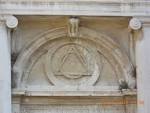
scottymuses.blogspot.com
in Venice: Cannaregio
1600 × 1200 - 133k - jpg |
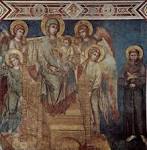
en.wikipedia.org
in the Lower Church of St
2024 × 2071 - 457k - jpg |

ginniehart.blogspot.com
St. Paulus Church (left),
1410 × 1600 - 607k - jpg |

slideshare.net
Mary, or of All Saints.
638 × 903 - 282k - jpg |

crystalinks.com
of the seminary of St.
555 × 368 - 55k - jpg |

forum.andrewgough.co.uk
Mary Magdalene, a character in
600 × 1040 - 685k - jpg |
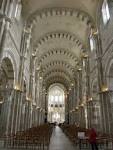
en.wikipedia.org
Abbey of St Mary Magdalene,
2448 × 3264 - 3093k - jpg |

slideshare.net
of Saint John.
638 × 903 - 351k - jpg |
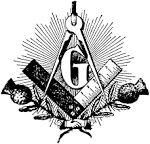
gabitos.com
http://freemasonry.bcy.ca/
1948 × 1867 - 79k - gif |

pinterest.com
Church of St. Mary Magdalene,
236 × 354 - 13k - jpg |

johnsanidopoulos.com
The Relics of Saint Athanasius
1600 × 1200 - 254k - jpg |

secretsinplainsight.com
Today using Google Earth I
1944 × 1112 - 1066k - jpg |
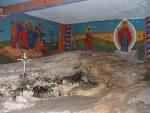
en.wikipedia.org
Church of St Stephen,
3072 × 2304 - 1502k - jpg |

en.wikipedia.org
Basilica of the Assumption of
2304 × 3525 - 2675k - jpg |

exurbe.com
Due to the popularity of
620 × 1075 - 193k - jpg |

cromleck-de-rennes.com
The Church of Rennes Le
552 × 326 - 89k - jpg |

en.wikipedia.org
Interior of the church
7998 × 5013 - 12266k - jpg |
|
|
|
|
|
|
ES ESOTERISMO PURO-DETRAS DE LAS "TEORIAS DE CONSPIRACION" HAY MENSAJES CON FUERTE REFERENCIA AL SANTO GRIAL, QUE LOS PSEUDOINTELECTUALES, CON MUCHA SED DE PODER NO LOGRAN DESCIFRAR
TOM HANKS
FRANK/BANK/KEY
ANK/LIBERTAD
¿CUAL ES EL SECRETO DETRAS DEL PAPA ARGENTINO FRANCISCO /FRANK?
Mitterrand built a pyramid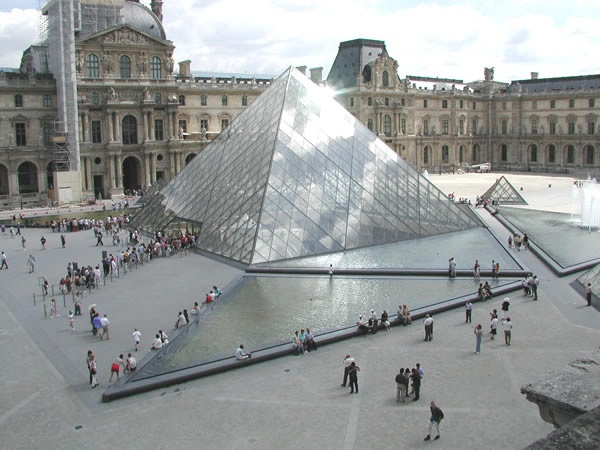
16:19 Y a ti te daré las llaves del reino de los cielos; y todo lo que atares en la tierra será atado en los cielos; y todo lo que desatares en la tierra será desatado en los cielos.
EL BUHO/CERRADURA ES LA MISMA VIRGEN MARIA LA MAGDALENA NUESTRA MADRE
EL ORO REFINADO ES EL GRIAL MISMO
714. Mateo 23:17: ¡Insensatos y ciegos! porque ¿cuál es mayor, el ORO, o el templo que santifica al ORO?
|
|
|
|
|
|
World Trade Center
The new World Trade Center is loaded with secrets in plain sight. My previous post was on the Freedom Tower which is WTC 1 in the following site plan:

Image courtesy MesserWoland under the Creative Commons Attribution-Share Alike 3.0 Unported license.
Here’s a brief accounting of the WTC towers:

Yes, the sum of the WTC building heights is 6660 feet. See my post on 666.
Do you notice that there is no WTC6? There used to be a WTC 6 before 9/11 but they aren’t rebuilding its namesake. Don’t you wonder why?
 The Pleiades by Elihu Vedder (1885) The Pleiades by Elihu Vedder (1885)
In Greek mythology, the Pleiades were seven sisters: Maia, Electra, Alcyone, Taygete, Asterope, Celaeno and Merope.
However only six stars in the Pleiades constellation are distinctly visible to the naked eye. The Japanese name for the Pleiades is Subaru, which in Japanese translates into “to govern.” World trade and the corporations that centralize it truly govern the world.
The Subaru car maker uses the six visible stars of the Pleiades as its logo:

The ancient Greeks explained the sudden disappearance of the seventh star in various narratives. According to one, all the Pleiades were consorts to gods, with the exception of Merope. She deserted her sisters in shame, having taken a mortal husband, Sisyphus, the King of Corinth. Another explanation for the ‘lost’ star related to the myth of the Electra, an ancestress of the royal house of Troy. After the destruction of Troy, the grief stricken Electra abandoned her sisters and was transformed into a comet – everafter to be a sign of impending doom. -Source
The above reminds me of the PATH of Comet Elenin which reaches perihelion on 9/11/11 and whose tail will come closest to the Earth on 11/11/11. I recommend listening to Richard Hoagland on this subject.
Perhaps the 9/11 Memorial entitled Reflecting Absence symbolizes the missing Pleiadian sister?
There is more to the Pleiadian mythos that is worth understanding:
The Pleiades were the virgin companions of Artemis, to the ancient Greeks, the goddess of hunting and the Moon. Whilst stalking a hind [deer], the great hunter Orion crept into a sunlit glade, disturbing the innocent play of the sisters. They fled in alarm.
His immoderate passions enflamed by their beauty and grace, he pursued them relentlessly, as was fitting for the greatest mortal hunter. In frustration, Artemis pleaded with Zeus for his intervention. With characteristic olympian sarcasm, he did.
As the hunter closed in on his prey, Zeus transformed the sisters into a flock of doves. They flew into the heavens, beyond the reach of their pursuer, but also removed from earthly companionship with the goddess! -Source
The word Pleiades comes from the Greek peleiades which means flock of doves. Speaking of, the World Trade Center Transportation Hub is nested between WTC 2 and WTC 3.
On September 6, 2005 Gov. George Pataki, Mayor Michael Bloomberg, Sen. Hillary Clinton, and other city, state, and federal officials gathered for a groundbreaking ceremony for the new World Trade Center Transportation Hub.
“This is a momentous occasion for the World Trade Center site and for the rebirth of Lower Manhattan,” Pataki said before a crowd gathered in the World Trade Center site.
Spanish architect Santiago Calatrava, who also spoke at the ceremony, designed the building in the shape of a bird in flight. In January 2004, when he unveiled his initial design concept, Calatrava said that he drew his inspiration from the image of a child releasing a bird. That image — evoking freedom and rebirth — came to life at the end of the ceremony when Calatrava’s daughter, Sophia, released two white doves into the blue sky above the site where the Twin Towers once stood. -Source
Doves and pigeons constitute the bird family Columbidae, long used in magical rituals, which I explored in my Never A Straight Answer post.

Image courtesy Alan D. Wilson under the under the Creative Commons Attribution-Share Alike 2.5 Generic license
As I said in that post, “This casts a new light on things such as the Space Shuttle Columbia, the District of Columbia, Columbia University, the Goddess Columbia, the country of Columbia, and of course Christopher Columbus himself.”
“Santiago Calatrava’s awe-inspiring design of a child releasing a bird into the air represents the hope and promise of a World Trade Center reborn out of the ashes of September 11. -Source
What bird rises out of the ashes? The phoenix of course. See my post on Phoenixes. Calatrava is the same person who designed the Sundial Bridge which aligns perfectly with the secret architecture of San Francisco. See this post. Everything is interconnected.
Costs of Calatrava’s Bird Keep on Soaring at Ground Zero
What’s the priciest part of the new World Trade Center? Nope, not 1 WTC, which will be America’s tallest building. The answer is a train station that will be used by New Jersey commuters and Red Bulls soccer fans, at a price tag of $3.4 billion—and climbing! That’s according to the Bergen Record, which obtained a federal report that says the final cost of architect Santiago Calatrava’s WTC transportation hub—the PATH train station and underground connections to the Fulton Street Transit Center and World Financial Center—might be $3.8 billion. -Source
Herbert Muschamp, architecture critic of The New York Times, wrote:
“Santiago Calatrava’s design for the World Trade Center PATH station should satisfy those who believe that buildings planned for ground zero must aspire to a spiritual dimension. Over the years, many people have discerned a metaphysical element in Mr. Calatrava’s work. I hope New Yorkers will detect its presence, too.” -Source
Fellow researcher Chad Stuemke dug up the fact that The Discovery Channel had a special called RISING (Rebuilding Ground Zero), the name obviously suggesting the phoenix. Here are some quotes Chad pulled out of RISING:
- This is Ground Zero’s new gateway.
- Calatrava’s Transportation Hall is an iconic gateway that links subway, street, and sky.
- Beneath the new skyscrapers an iconic gateway is filling the void.
- Project architect Mike Garz said, “I just look forward to a time when that space opens to the heavens and I can see the angels coming to collect the souls.”
OK now this inter-dimensional gateway is really starting to creep me out.
Calatrava’s above ground structure is literally called Oculus, meaning eye. -Source
The Oculus structure measures 330 feet in length and connects 13 PATH trains underground. Calatrava says the design is inspired by the crown on the Statue of Liberty. Architecture critics have compared it to a winged dinosaur. -Source

Oculus is also the name of the art installation in the underground Chambers Street / WTC subway station. See my post on Ellipses for more on this.

Image from Oculus installation courtesy Grant Chamberlin
Calatrava’s Transportation Hub replaces a temporary PATH station that had to be built after the underground system was destroyed on 9/11. The temporary station put two uptown services into operation: Newark–33rd Street (red) and Hoboken–33rd Street (blue).
The underground part of the new PATH hall will look like this:

The RISING special says, “PATH Hall sits directly below Memorial Plaza and consists of a spine with 25 vertebrae connecting 275 extending ribs.”
Fellow researcher Mark Gray points out that Swans have 25 cervical vertebrae. And 275 / 25 = 11
In the name of security, Santiago Calatrava’s bird has grown a beak. Its ribs have doubled in number and its wings have lost their interstices of glass…. The main transit hall, between Church and Greenwich Streets, will almost certainly lose some of its delicate quality, while gaining structural expressiveness. It may now evoke a slender stegosaurus more than it does a bird. -Source
Most researchers now support the view that birds are a group of theropod dinosaurs. The Transportation Hub looks to me like a monumental reptilian eye. Check out the Reptilian Agenda for another deep dark rabbit hole.
The Wedge of Light
Daniel Liebeskind won the competition to be the master plan architect for the reconstruction of the World Trade Center site. Liebeskind’s buildings include the Jewish Museum in Berlin, the Danish Jewish Museum in Copenhagen, the Contemporary Jewish Museum in San Francisco, the Wohl Centre in Israel, and the Imperial War Museum North in the UK.
Liebeskind’s concept for WTC2, called the “wedge of light,” states that no shadows shall be cast on the memorial park on September 11th. Lord Foster designed the top of the building like a wedge with four rhombi at the top.
Speaking of the Pleiades, shadows, and Lords:
Seek him that maketh the seven stars and Orion, and turneth the shadow of death into the morning, and maketh the day dark with night: that calleth for the waters of the sea, and poureth them out upon the face of the earth: The LORD is his name. -Amos 5:8

Rendering copyright Silverstein Properties
The Transportation Hall was also supposedly designed so at the exact time the second tower collapsed, every Sept. 11th at 10:28am, the sun enters the transportation hub illuminating the building with light.
However Eli Attia, an architect who has been a frequent critic of the rebuilding process, published a study showing that 40 percent to 99 percent of the Wedge of Light would be in shadow cast by the Millenium Hilton Hotel during the times when Mr. Libeskind had said it would be free of shadows.
Mr. Libeskind won the enthusiastic support of both Gov. George E. Pataki and Mayor Michael R. Bloomberg with his design, and Mr. Pataki ensured Mr. Libeskind’s selection for the ground zero commission when he overruled a committee of directors of the development corporation, which had recommended the selection of the other finalist, a group of architects known as Think. -Source
This situation reminds me of how I.M. Pei was selected for the Louvre Pyramid design without a competition and then how Mitterand stepped in and selected Johann Otto von Spreckelsen to be the architect of the La Grande Arche even though he wasn’t winning the national design competition for the megaproject. Sometimes competitions are a necessary sham when secret architecture has long been in the pipeline.
“Richard Meier, the eminent architect who participated in the ground zero design competition — and who therefore lost to Mr. Libeskind — disagreed [with the fact that shadows fall on the wedge of light]. ”How could you not take it literally?” he asked. ”He didn’t say that the sun would be reflected off buildings and that illumination would somehow create a wedge of light.’
Terence Riley, the chief curator for the department of architecture and design at the Museum of Modern Art, took a historical view. ”Given the long history of solar orientation in architectural design, I don’t suppose it is unreasonable for people to have assumed that the Wedge of Light would be illuminated by direct sunlight on Sept. 11,” he said. -Source
Light is obviously very important to this mega-ritual in the making. Mark Gray discovered one more timely piece of the puzzle:
On 9-11-11 at sunset, the famous “Tribute in Light” will return to the skies above New York City for the night. The tribute is comprised of “88” 7,000-watt xenon light bulbs, arranged in 48-foot squares inspired by the shape and orientation of the Twin Towers. The illuminated memorial reaches four miles into the sky and is visible from as far as 30 miles away. The two arrays cast the strongest shaft of light ever projected from Earth into the night sky. -Source

Image courtesy D L under the Creative Commons Attribution 2.0 Generic license
The Tribute in Light ought to get the light bearer’s attention, don’t you think?
Grant Chamberlin pointed out in a comment on this post that the 88 light bulbs in the Tribute in Light might be significant. This is another dark rabbit hole, but if we are to be whole and healthy we must have the courage to look into our shadows.
The 8s stand for the eighth letter of the alphabet (H), with ‘HH’ standing for “Heil Hitler”. -Source
The phrase “Heil Hitler” was inspired by a statement, 88 words in length, from Volume 1, Chapter 8 of Adolf Hitler’s Mein Kampf:
What we must fight for is to safeguard the existence and reproduction of our race and our people, the sustenance of our children and the purity of our blood, the freedom and independence of the fatherland, so that our people may mature for the fulfillment of the mission allotted it by the creator of the universe. Every thought and every idea, every doctrine and all knowledge, must serve this purpose. And everything must be examined from this point of view and used or rejected according to its utility.
Eighty-eight is used as code among Neo-Nazis to identify each other. -Source
Another such illuminist monument was called the Cathedral of Light:

Image courtesy Bundesarchiv, Bild 183-1982-1130-502 / CC-BY-SA
The cathedral of light was a main aesthetic feature of the Nuremberg Rallies. It was the brainchild of Albert Speer, who was commissioned by Adolf Hitler to design and organise the Nuremberg Parade Grounds for the annual celebrations. It is still considered amongst Speer’s most important works.
The effect was a brilliant one, both from within the design and on the outside. -Source
The primary aspect of the Nuremberg Rallies was to strengthen the personality cult of Adolf Hitler, portraying Hitler as Germany’s saviour, chosen by providence. The gathered masses listened to the Führer’s speeches, swore loyalty and marched before him. Representing the Volksgemeinschaft as a whole, the rallies served to demonstrate the might of the German people.
The visitors of the rallies by their own free will were subordinate to the discipline and order in which they should be reborn as a new people. -Source
The Cathedral of Christ the Light also resonates with this post:

Image courtesy Skier Dude under the Creative Commons Attribution-Share Alike 3.0 Unported license.
The worship space in Christ the Light is a vesica pisces shape, the shape formed by the intersection of two circles [symbol of the female generative organs]. The walls are composed of overlapping panels of wood and glass rising skyward to form the vault, much like the scales of a fish.
The Catholic Cathedral Corporation of the East Bay instituted a design competition for Christ the Light. Various designs were judged and the corporation announced Santiago Calatrava (architect of the PATH Transportation Hall and Sundial Bridge) as the winner. Calatrava’s design for Christ the Light was chosen before a site was appropriated for the project.
However, by the time a site was chosen, Calatrava’s design fell out of favor and instead replaced by a design of competition runner-up Craig W. Hartman, FAIA of Skidmore, Owings and Merrill (SOM). -Source
SOM designed WTC1 (the Freedom Tower) and the new WTC7.
Consider these provocative coincidences:
Joseph Ratzinger joined the Hitler Youth in 1941 when, according to him and his supporters, it became compulsory for all German boys. Millions of Germans were in a position similar to that of Joseph Ratzinger and his family, so why spend so much time focusing on him? Because he is no longer merely Joseph Ratzinger, or even a Catholic Cardinal — he is now Pope Benedict XVI. None of the other Germans who joined the Hitler Youth, were part of the military in Nazi Germany, lived near a concentration camp, and watched Jews being rounded up for death camps has ever become pope. -Source
Pope Benedict prayed for “eternal light and peace” at ground zero on a black square pool on the 111th day of the year (2008 was a leap year).
On September 11th there are 111 days remaining until the end of the year. The original Twin Towers had 111 floors if you count the roof. See my post on 110-111.

Mark Gray posted this on Facebook:

See my post on the Freedom Tower for more on the black cube and its encoding in the 9/11 Memorial.

Image from Star Trek The Next Generation
Resistance is anything but futile. Remember the Borg and the overt Nazis were defeated.
William Henry’s research goes into some fascinating areas I haven’t touched on and I’m excited to be interviewed by him tomorrow. I’ll post the link on my Interviews page when it’s online. Here is William’s fascinating take on the mysteries of 9/11/11.
On the flipside Mark Gray has made some great discoveries relating to the positive side of 88.
Mark Gray and William Henry wrote the book Freedom’s Gate together about the lost symbols in the US Capitol. I highly recommend it.

Image courtesy Mark Gray
The distance from the center of the Alexander Hamilton U.S. Customs House (built over the location of the original Fort Amsterdam) to the center of the Freedom Tower is exactly 1000 meters.
The distance from the corner of Reflecting Absence (former WTC North Tower) to the center of the Customs House is 888 meters.

The elliptical glass (see Ellipses) in the rotunda has 88 rays.

Image courtesy Mark Gray
Mark makes the following brilliant comparison, calling the Customs House Manhattan Gate:

Let’s also not forget the Wedge of Light itself (WTC2) has 88 floors and WTC1, WTC4, and WTC7 have numerical resonances with the keyboard.
Are we being played?

In addition there are 88 constellations in the sky:

Image courtesy Mark Gray
Eighty-eight (88) symbolizes fortune and good luck since the word 8 sounds similar to the word Fā (发, which implies 发财, or wealth, in Mandarin). The number 8 is considered to be the luckiest number of all in Chinese culture and prices in Chinese supermarkets can often be found containing many 8’s The Chinese government has even been auctioning auto license plates containing many 8s for tens of thousands of dollars. The 2008 Beijing Olympics opened on 8/8/08 at 8 p.m.. -Source
Thank you Mark for the reminder that in duality every symbol has an opposite. Every coin has two sides. The wise look at both of them.
This just in…
Jan Thulstrup uncovered an amazing connection in Psalm 119 which is the longest chapter in the Bible.
119 is the mirror reflection of 911.
Psalm 119 has 176 verses. 176 = 88 + 88. 176 is an octagonal number.
Psalm 119 is divided into twenty-two stanzas, one stanza for each letter of the Hebrew alphabet. Each stanza begins with the corresponding letter of the Hebrew alphabet.
Each stanza has 8 verses, composed as octaves (from the Latin octo meaning “eight”) in music.
Here a Jew reads Psalm 119 at the Wailing Wall in Jerusalem:

Image courtesy Brian Jeffery Beggerly under the Creative Commons Attribution 2.0 Generic license.
©2012 SIPS Productions Inc. – All Rights Reserved.
http://www.secretsinplainsight.com/2011/09/03/world-trade-center/
|
|
|
|
|
|
Paired Obelisks / Pillars / Minarets / Towers
All of the following structures and symbols read as monumental 11s.
Temple of Luxor:

Solomon’s Temple:
Boaz is known as the pillar of strength or severity and represents the Sun. Jachin is known as the pillar of beauty or mildness and represents the Moon. Boaz and Jachin are built into the architecture of all masonic lodges.

Kaaba in Mecca:

Chartres Cathedral:

The Pillars of Hercules:
One pillar is on Africa and the other on Europe across the straight of Gibraltar. Here the pillars are on the foreword to Sir Francis Bacon’s Novum Organum (1620). Francis Bacon is said to be the grandfather of Freemasonry.

Priestess Tarot Card:
Boaz and Jachin are B and J below. Note the hypostyle capitals from the Temple of Karnac in Egypt. The pomegranates (which Hades tricked Persephone into eating) are arranged in the Tree of Life pattern. The high priestess is the third column. Note the Torah in her arms, the throne she sits on, and the moon at her feet and Da’at on her head.

Illuminati High Priestess Sex Kitten Lady Gaga Enthroned Between Pillars in Masonic Lodge:
Her hands emphasize Boaz over Jachin, severity over mildness, strength over beauty.

Above image from this article that exposes what Lady Gaga is all about
Former World Trade Center in NYC:
If you count the roof level, the north and south towers each had 111 floors.
- North Tower 1 WTC: 1,368 ft (Boaz)
- South Tower 2 WTC: 1,362 ft (Jachin)

Image courtesy Jeffmock under the Creative Commons Attribution-Share Alike 3.0 Unported license
I recommend watching the entire video series entitled “Do You Believe in Magick” for a mind opening exposé on the symbolism surrounding the Twin Towers, 9/11, and much more.
New York City and George W Bush each have 11 letters. NY was the 11th state admitted to the union.
What 11 is Ultimately About
My personal opinion about what 11 is all about is integrating our bicameral minds into a state of balanced consciousness. Schooling emphasizes the left brain at the expense of the right. Advancement in society is almost entirely a left brained affair. The feminine right side of our consciousness is being systematically suppressed.
Psychic health comes when both hemispheres of the brain are more evenly matched. Artists shouldn’t be starving and psychopaths shouldn’t be running the world. Extremes flourish because of the imbalance in human consciousness that desperately needs to be healed.

Image courtesy Wyglif under the Creative Commons Attribution-Share Alike 3.0 Unported license.
The Future: Hermitage Plaza in Paris
Hermitage Plaza is a project of two towers to be built on the newly named Place Napoleon Bonaparte (who was responsible for amazing secret architecture, see my Paris episodes) commencing construction this year. The tallest of the two towers will be one meter shorter than the Eiffel Tower at 323 m, making this project the tallest in the European Union when it will be completed in 2016. The twin Hermitage Plaza towers will eventually eclipse the Shard (which is currently under construction in London) as the tallest building in the EU.

Image fair use from project’s official site
The name “Hermitage Plaza” reminds me of The Hermit tarot card. The Hermit is of course another light bringer.

Hermitage Plaza was designed by Foster + Partners and revealed by Sir Norman Foster himself on 3/11/09, exactly two years before the Fukushima nuclear disaster.
Here is some intriguing Atonist copy from the official site:
“The crystalline forms attract the sun beams, animating the buildings throughout the day with changing patterns of light…coming alive at every opportunity and creating an atmosphere worthy of THE CITY OF LIGHT. [capitalization sic]”
One tower is slightly taller than the other, just like at the former World Trade Center in Manhattan. The tallest of the two will have 93 floors which is a very interesting number…
Thelema
The number 93 is of great significance in Thelema, a religious philosophy founded by English author and occultist Aleister Crowley with the writing of The Book of the Law. The word thelema equates to 93 using Greek isopsephy, which is like gematria in Hebrew.
Thelema = Θελημα
- Θ (Theta) = 9 +
- ε (Epsilon) = 5 +
- λ (Lambda) = 30 +
- η (Eta) = 8 +
- μ (Mu) = 40 +
- α (Alpha) 1
- = 93
The philosophy of Thelema is expressed in these 11 words:
“Do what thou wilt shall be the whole of the Law.”
Here’s what wikipedia article on 93 states:
It is common for Thelemites to greet each other with “93” in person as well as in the opening and closing of written correspondence. This custom derives from Aleister Crowley’s guideline that Thelemites should greet each other with the Law of Thelema by saying “Do what thou wilt shall be the whole of the law.” Since saying the entire Law can be cumbersome, using 93 has become a kind of shorthand.
Aleister Crowley wrote this on the matter:
I am often asked why I begin my letters this way. No matter whether I am writing to my lady or to my butcher, always I begin with these eleven words. Why, how else should I begin? What other greeting could be so glad? Look, brother, we are free! Rejoice with me, sister, there is no law beyond Do what thou wilt!
Kabbalistic Tree of Life
There are 10 sephiroth in the Tree of Life from the Jewish Kabbalah plus a hidden one called Da’at (or Daath) that unites all 11.
Humans who become self-giving like the Light become able to see it, and for them the benefits of Daat’s Light seem “revealed”. However, humans who remain selfish cannot see it, and for them its benefits seem “hidden”.

Apollo 11
Apollo 11 was the first mission that supposedly reached the moon.

Executive Order 11110
In his book Crossfire: The Plot That Killed Kennedy, Jim Mars argues that what got JFK killed was signing of Executive Order 11110 which was an attempt to wrest control of the monetary policy of the US away from the Federal Reserve Bank.
Executive Order 11110 was signed on 4 June 63 and JFK was assassinated on 22 Nov 63.
JFK was killed 11+11 days into the 11th month of 1963.
Triangle / Pyramid Numbers
Any product of repeating ones makes a triangle or an Egyptian pyramid if you will: 11×11=121, 111×111=12321, 1111×1111=1234321, etc.

Art by the author
Arago Markers in Paris
There are 121 (11×11) documented bronze medallions in a line across Paris marking the Paris prime meridian which was used in France for 200 years before Greenwich UK became the world’s prime meridian. The metric system was defined using the Paris prime meridian. Arago was a French astronomer.

Football / Soccer
Football or soccer as it is known in the United States has amazing numerical symbolism. 11 players on one team compete against 11 players on the other team. The ball is the spherical marriage of hexagon and pentagon having 32 panels. The world’s most popular sport therefore appears to be a Masonic invention.

The Mayan Calendar
The end date of the Mayan calendar is 21 Dec 2012 at 11:11 AM GMT.

Image of Hunab Ku, the galactic center worshipped by the Mayans.
The end of the Mayan calendar corresponds to when Earth passes the galactic center.
The Big Empty
This mysterious movie from 2003 encodes repeating ones in occult symbols. Here are the protagonist John Person’s bowling shoes. He stayed in motel room 111. The movie builds to a rendezvous with a UFO. Personally I think the movie sucks except for the cleverly encoded symbolism. Here is an image from the end of the movie:

Fair use screen capture of The Big Empty
Final dialogue in The Big Empty:
John Person: “You look different tonight.”
Grace: “It’s the tenth frame. You get one more chance. Make it count. Then you start a new game.”
In ten-pin bowling, there are only 10 frames. Grace says there is one more chance making an eleventh frame, and John Person proceeds to bowl one last time. The bowling ball rolls down the alley and then it cuts to a bowling ball rolling across the desert. Very intriguing. By the way ten pin bowling has the pins arranged in the Pythagorean tetractys, the most sacred diagram in the Pythagoreans secret worship of number. Many sports encode secrets in plain sight. I’ll cover Masonic Baseball in a future post.

Image courtesy Stefan Grazer under the Creative Commons Attribution-Share Alike 3.0 Unported license
Statue of Liberty
The height of the Statue of Liberty is 111′-1″ from bottom of foot to top of head. The 7 rays on the crown and the 11 points of the base star echo the proportions of the Great Pyramid’s 7:11 height to base proportion. The superb book Talisman by Graham Hancock and Robert Bauval convincingly shows this goddess is actually the Egyptian Isis.

Image courtesy Elcobbola under the Creative Commons Attribution-Share Alike 3.0 Unported license.
The Great Pyramid
According to Richard Heath’s metrology in Sacred Number (well worth reading by the way) the Great Pyramid (GP) measures 480 English feet to the top of the “unfinished pyramid” which happens to be precisely 1/11th of a mile.

The pyramidion measured 1-1/11 feet in height. Herodotus tells us it was made of electrum and brilliantly reflected light (electrum is an alloy of gold and silver). The valuable pyramidion is long gone of course.

Earth Measure
One degree of longitude measures 111,111 meters at the equator. The mean degree of latitude is 111,111m.

The Solar Cycle
The amount of solar radiation received on Earth rises and falls in an 11 year cycle. This is called the solar cycle.

Magic Square of the Sun
In the traditional magic square of the Sun every row, column and diagonal adds up to 111.

Templars
The nine founding templars first banded together in 1111 AD.

Templar flag courtesy of Lexicon under Creative Commons Attribution-Share Alike 3.0 Unported license
Chartres Labyrinth and Ptolemaic Cosmology
Both have 11 concentric rings.

Important Addresses
1111 California Street is Masonic Center at the top of Nob Hill in San Francisco, directly across from Grace Cathedral which features a replica of the Chartres labyrinth depicted above.

There is a frieze on the building exterior representing a gigantic tug of war between good and evil forces where they are pulling on the Sun. The interior strangely contains gravel and soil from each of the 58 counties in California, suggesting some kind of sympathetic magic at work.
111 Cannon Street is the address of the London Stone at the base of the street pyramid in the City of London. This is the stone the Romans laid as the omphalos stone, the point from which all distances were measured in Britainnia.
The London Stone is recognized as the symbolic authority and heart of the City of London. It was the place where deals were forged and oaths were sworn. It was also the point from which official proclamations were made.

1111 Constitution Avenue NW in Washington DC is the headquarters of the Internal Revenue Service.

Image courtesy Cliff under the Creative Commons Attribution 2.0 Generic license
Remembrance Day
The major hostilities of World War I were formally ended on the 11th hour of the 11th day of the 11th month of 1918 with the German signing of the armistice. As a result Remembrance Day is observed on 11/11 at 11 AM in commonwealth countries.
The Shrine of Remembrance was built in Melbourne Australia in 1934 to help people remember Remembrance Day. One third of the population of the time came out on opening day. The building features an Egyptian style truncated pyramid on top.

The core of the building houses the Stone of Remembrance. This is a marble stone sunk below the pavement, so that visitors must bow their heads to read the inscription on it:
GREATER LOVE HATH NO MAN
The Stone is aligned with an aperture in the roof so that a ray of sunlight falls on the word LOVE on the Stone of Remembrance at exactly at 11 AM on the 11th day of the 11th month. The beam of light hitting the word LOVE is an appropriate touch for anyone who loves the light.

Cenotaphs
Cenotaph means empty tomb. A cenotaph marks the remains of a person or group of people whose remains remain elsewhere. This cenotaph in London says “The Glorious Dead” to honor those soldiers who died in WWI. Red wreaths or red poppies are left at these geomantic markers representing the blood split in war. Very morbid to glorify death and blood when you think about it. How about celebrating these young men’s lives rather than their spilled blood? Here is the cenotaph in London but they are all over the world in commonwealth countries.

Photo courtesy Chris Nyborg under the Creative Commons Attribution-Share Alike 3.0 Unported license
London Alignment
Here’s an intriguing alignment I discovered in London. A straight line connects the Victoria memorial in front of Buckingham Palace with the aforementioned Remembrance Day cenotaph, goes through the highly symbolic 444′ high, 32 car London Eye and continues to The Shard whose address is 32 London Bridge. 32 is of course an important Masonic number in the Scottish rite.

111,000 Square Meters
The Shard at 32 London Bridge will be the tallest building in the EU for a few years before it is eclipsed by Hermitage Plaza in Paris. Architect Renzo Piano’s structure is currently under construction and has 72 habitable floors comprising a floor area of 111,000 m2

Fair use source
In the Kabbalah the number 72 is called the Shemhamphorasch referring to the number of names of God.
The IM Pei (of Louvre Pyramid fame) designed Fountain Place and the SOM designed Trammel Crow Center (with pyramid on roof) both on Ross Avenue (rose or rosicrucian symbol) in Dallas Texas have exactly the same symbolic floor area of 111,000 m2
The Bank of America
The Bank of America logo encodes both 11:11 and 33. Two pairs of red elevens encodes 11:11.

Image courtesy of Brian Katt under the Creative Commons Attribution-Share Alike 3.0 Unported license
Three pairs of both red and blue elevens encodes 33. See this post for all things 33.
Rik Clay’s 11:11 Research
This Red Ice Creations interview will blow your mind about the symbolism swirling around 11:11. Hour one and hour two.
©2012 SIPS Productions Inc. – All Rights Reserved.
|
|
|
|
|
|
| Reply |
Message 519 of 519 on the subject |
|
|
|
|
|
|
|
|
|
Venus Emerging from the Sea
Titian, Venus Anadyomene (Venus Rising from the Sea), 1520. Oil on Canvas, 75.80 x 57.60 cm. National Gallery of Scotland.
Titian references the familiar, Classical form of Venus most explicitly in his Venus Anadyomene. Here the goddess is clearly identified through the attribute of the shell in the bottom left-hand corner, a reference to her birth. Titian paints her as she emerges from the sea, wringing out her tousled hair as she becomes aware of some unseen observer. The work is a modification of the classical Crouching Venus (Figure 2) composition which depicts the goddess, who has been surprised at her bath, in a crouching position with one arm raised to cover her breasts. Titian’s figure, although standing, has been cropped slightly above the knees alluding to the tradition of the goddess in the crouched position with her knees close to the ground. This Venus returns the gaze of her onlooker but makes no effort to conceal herself. She stands her ground refusing to be intimidated and perhaps is even inviting the viewer to gaze upon her natural beauty in all its glory. So too is Titian inviting his viewer to gaze upon the beauty of his painting as he proudly asserts his connection to the art of antiquity.
Doidalsas, Crouching Venus, 250-240 BCE. Museo Archeologico Nazionale, Naples, Italy.
With the Venus Anadyomene, Titian makes a direct reference to the renowned Classical Greek painter Apelles and his lost work of the same subject. As recounted by Pliny in his Natural History, Apelles painted an image of Venus emerging from the sea for his patron Alexander the Great. As Pliny recounts, “The king was particularly fond of Pancaste, one of his mistresses, and, out of admiration for her physical beauty, he commissioned Apelles to paint her in the nude.” [1] It is asserted that Pancaste was painted by the artist in the guise of Venus Anadyomene, thus establishing the early connection between images of the goddess of love and representations of ideal beauty. In fact, Alexander found this image of his lover as Venus to be so naturalistic and beautiful that he rewarded the painter with the gift of Pancaste.[2] Throughout his career Titian actively encouraged comparisons between himself and the great painter of antiquity, and by painting the very image for which Apelles was so well-known he asserts himself as his successor (or even as his superior). As Luba Freedman notes, it is Titian’s“self-establishing as an excellent portraitist and as the painter of Venus, which were the two categories of painting in which Apelles had excelled” that suggest the Venetian artist’s desire to connect his career with the venerated Classical tradition.[3]
In addition to asserting his own artistic skill Venus Anadyomene, Titian also asserts the primacy of painting over sculpture, of colorito over disegno. The minimalist background allows for the volumetric figure of Venus to project in a sculptural manner that is perhaps a reference to Michelangelo’s figures on the Sistine ceiling. [4] Venus is given a three-dimensional quality associated with sculpture but is more naturally depicted in the painted medium as the introduction of color endows her with flesh tones that bring her further to life. Titian also employs Venetian colorito to emphasize the landscape of the sky and the sea, elements not achievable through the medium of sculpture. Perhaps too, the figure of Venus can stand in as a symbol for Venice, “for had not Venice risen from the sea, as alluring as the goddess herself?”[5]
[1] Trevor M. Murphy Pliny the Elder’s Natural History: the Empire in the Encyclopedia (New York: Oxford Univ. Press, 2004), 332.
[3] Luba Freedman, “Titian and the Classical Heritage”, The Cambridge Companion to Titian, Patricia Meilman ed. (Cambridge: Cambridge Univ. Press, 2004), 194.
Responses
|
|
|
|
 Primer Primer
 Anterior
47 a 61 de 136
Següent Anterior
47 a 61 de 136
Següent Darrer
Darrer
|











![]()



























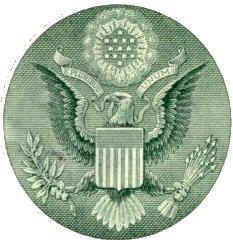
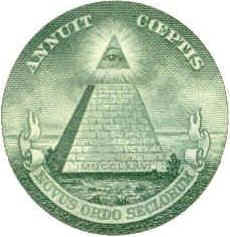

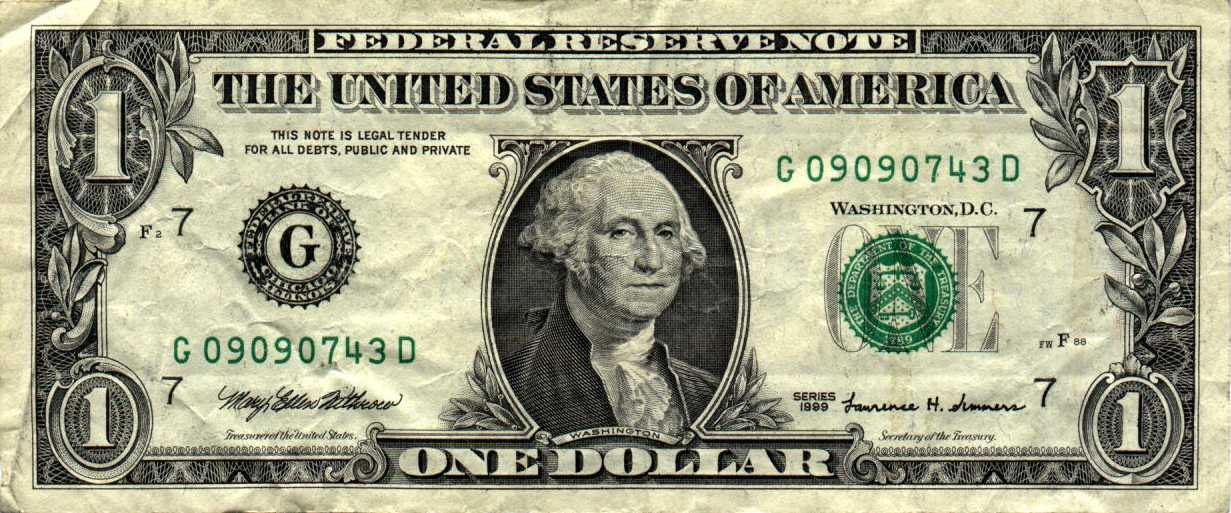

.jpg)


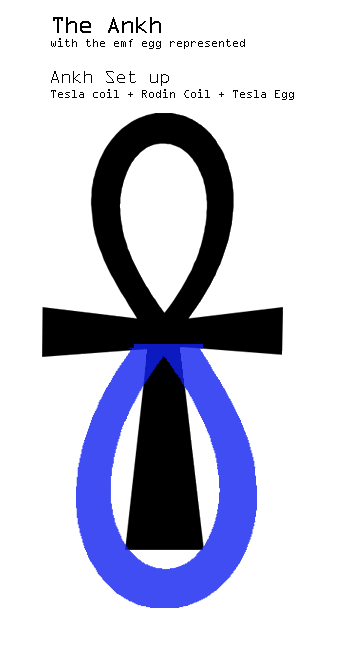

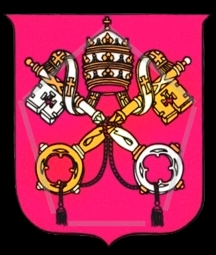

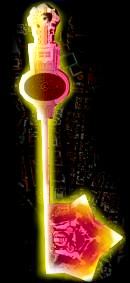
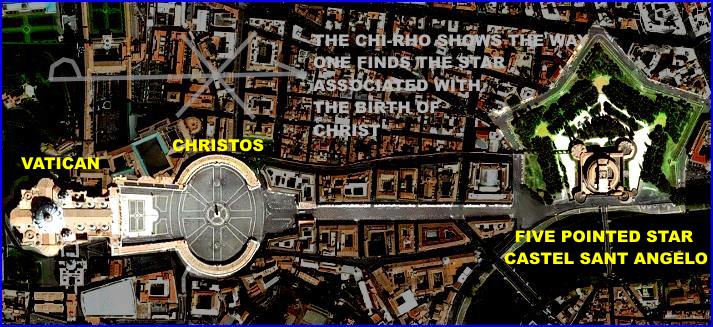
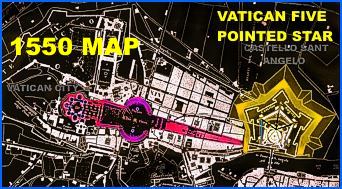
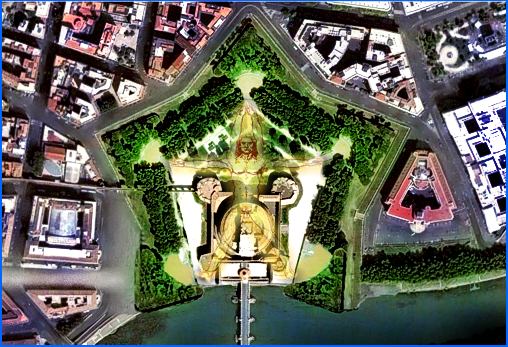




 The Pleiades by Elihu Vedder (1885)
The Pleiades by Elihu Vedder (1885)





































































